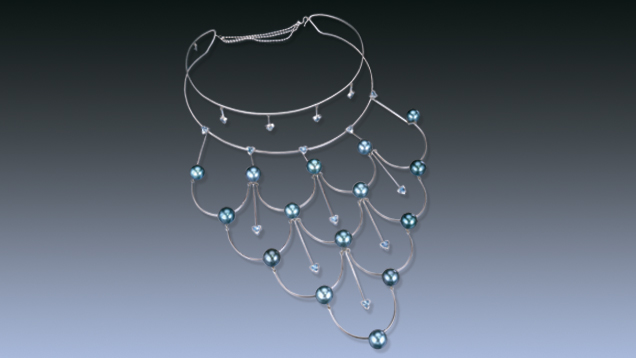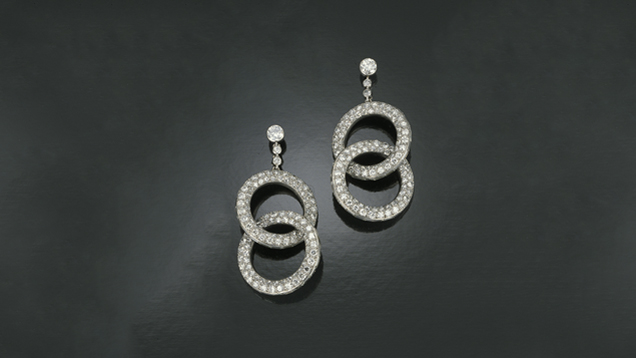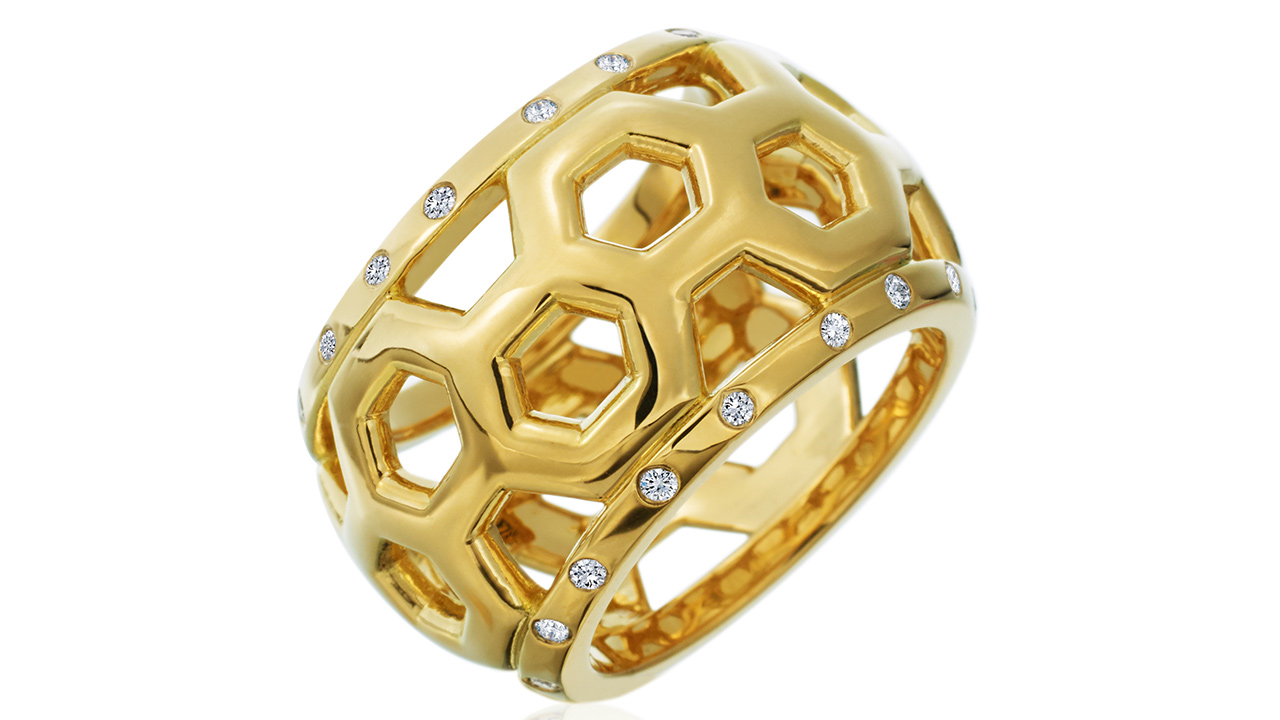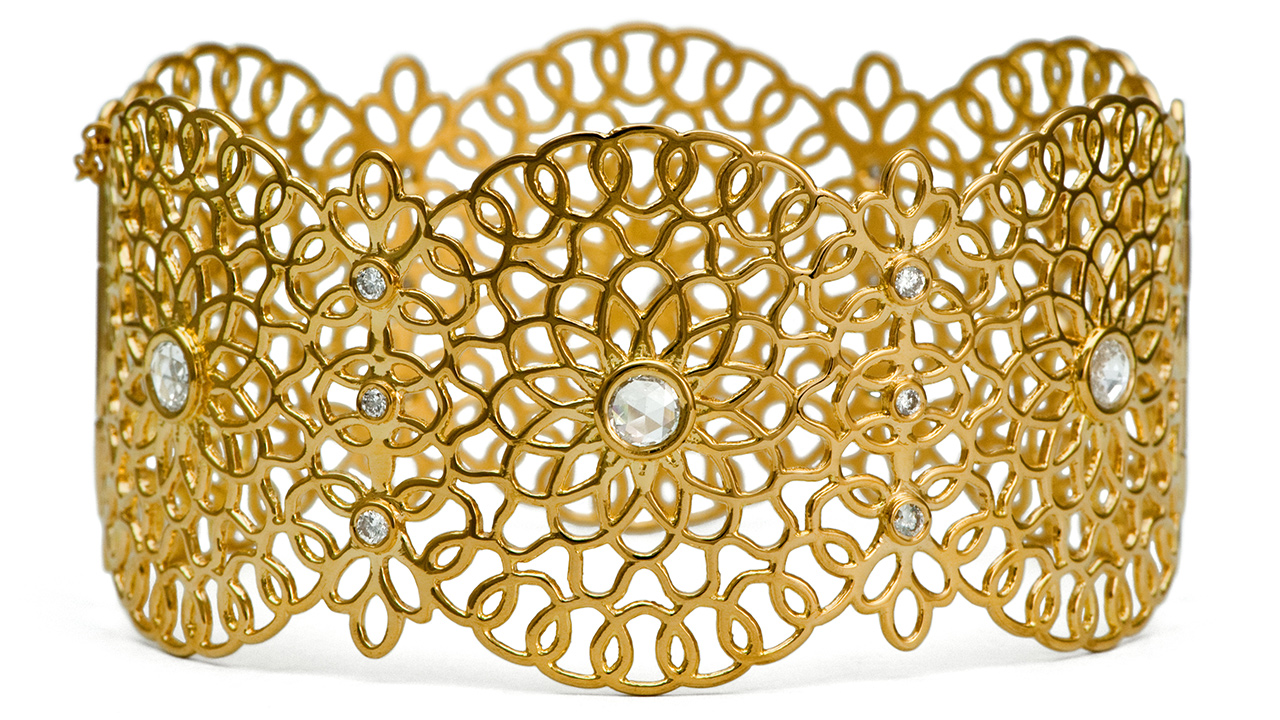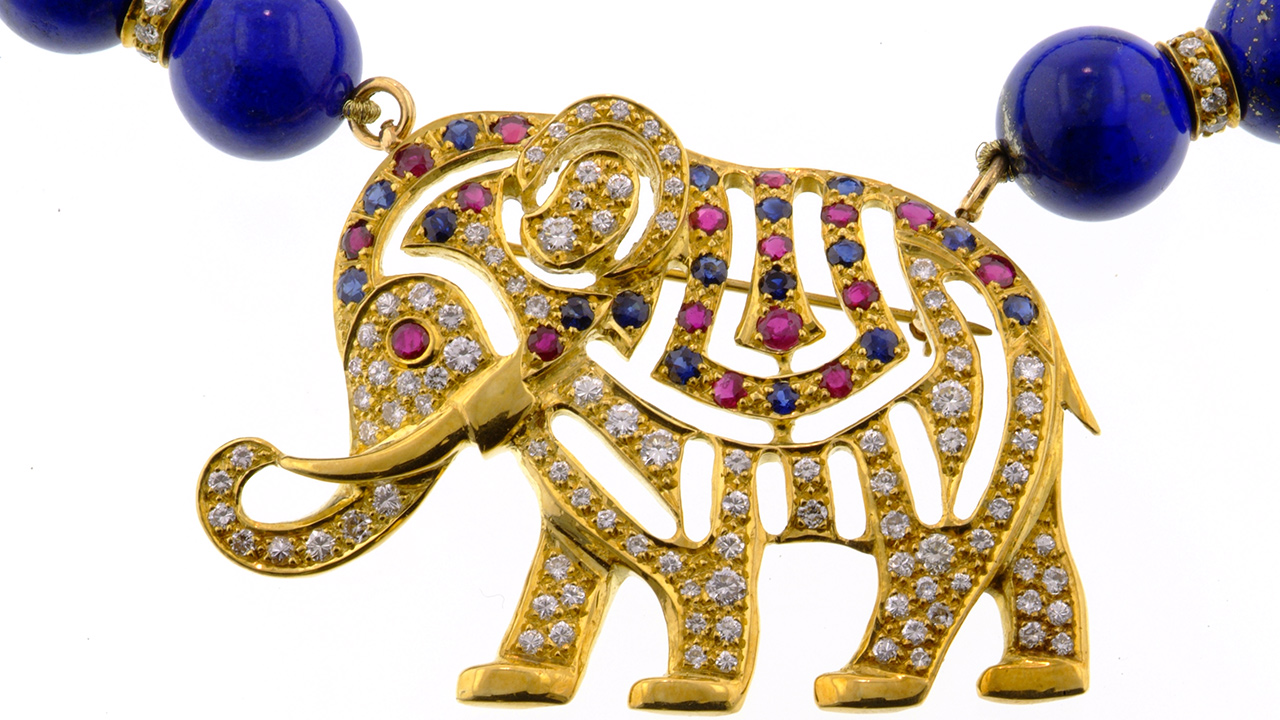Positive Design With
Negative Space
September 29, 2014
Sometimes what you don’t see is as important as what you do.
“Negative space” is the explanation to this curious statement. It is the empty area between two objects that gives shape and depth to a design.
Minimalist painters and sculptors in the 1960s and early 1970s generously used negative space in their work. Their style was part of the “less is more” school – a philosophy that said that an object didn’t need to be ornate to be beautiful.
Negative space is also a popular motif in contemporary jewelry design. Its hallmark is a clean, modern look.
Mark Schneider’s MJSA American Vision Award winning design, a convertible ring/pendant, is a study in negative space. The interlocking platinum bands make quarter moons, creating slivers of emptiness. When worn as a ring, the black Tahitian cultured pearl looks like it is suspended above the finger – another use of negative space.
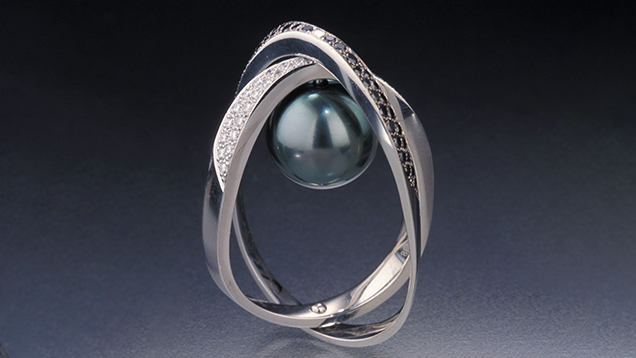
The rising price of precious metals has also driven jewelry designers to incorporate more negative space into their work. With the technique, designers can make stunning-but-affordable pieces by using less metal. So the inclusion of negative space in a design is ultimately a blend of necessity and style.
The future of negative space? Many consumers yearn for simple shapes as a remedy for complex times and the price of precious metals is not likely to fall, so negative space will continue to have a positive influence on jewelry design.
